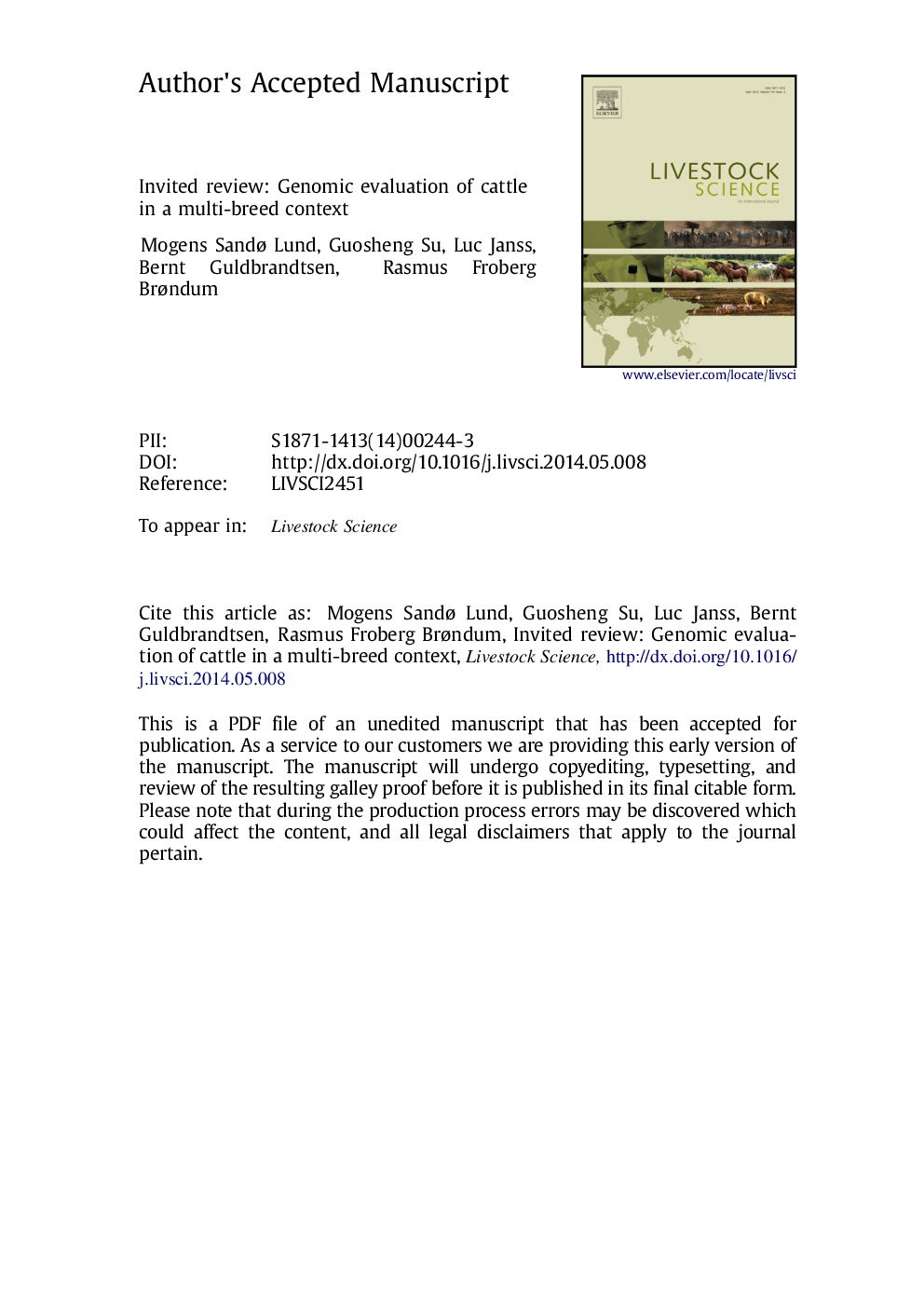| Article ID | Journal | Published Year | Pages | File Type |
|---|---|---|---|---|
| 5790163 | Livestock Science | 2014 | 29 Pages |
Abstract
In order to obtain accurate genomic breeding values a large number of reference animals with both phenotype and genotype data are needed. This poses a challenge for breeds with small reference populations. One option to overcome this obstacle is to use a multi-breed reference population. However, combining populations across breeds is not straightforward due to differences in linkage disequilibrium structure and weak relationships between breeds. This study offers a review of the available literature on the use of reference populations compiled from different cattle breeds. Results show that the effect of multi-breed reference populations on the accuracy of genomic prediction is highly affected by the genetic distance between breeds. When combining populations of the same breeds from different countries, large increases in accuracy are seen, whereas for admixed populations with some exchange of sires, substantial but smaller gains are found. Little or no benefit is found when combining distantly related breeds such as Holstein and Jersey and using the widely used genomic BLUP model. By using more sophisticated Bayesian variable selection models that put more focus on genomic markers in strong linkage disequilibrium with causative variants in combination with denser markers sets or functional subsets of markers, it is however possible to utilize information across distantly related breeds to increase the accuracy of genomic prediction. The further development of multi-breed genomic prediction models offers not only increases in the accuracy of genomic breeding values for small breeds, but will also give a stronger persistence of the accuracy over generations within larger breeds.
Related Topics
Life Sciences
Agricultural and Biological Sciences
Animal Science and Zoology
Authors
Mogens Sandø Lund, Guosheng Su, Luc Janss, Bernt Guldbrandtsen, Rasmus Froberg Brøndum,
